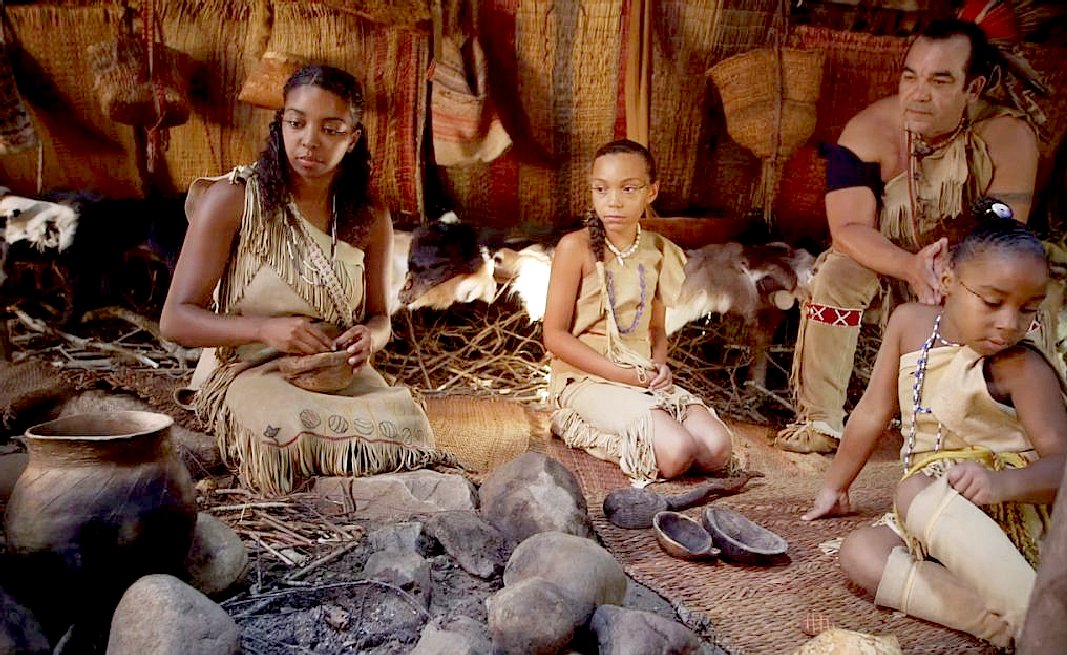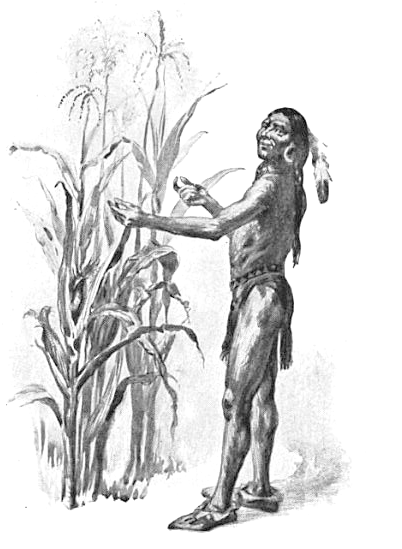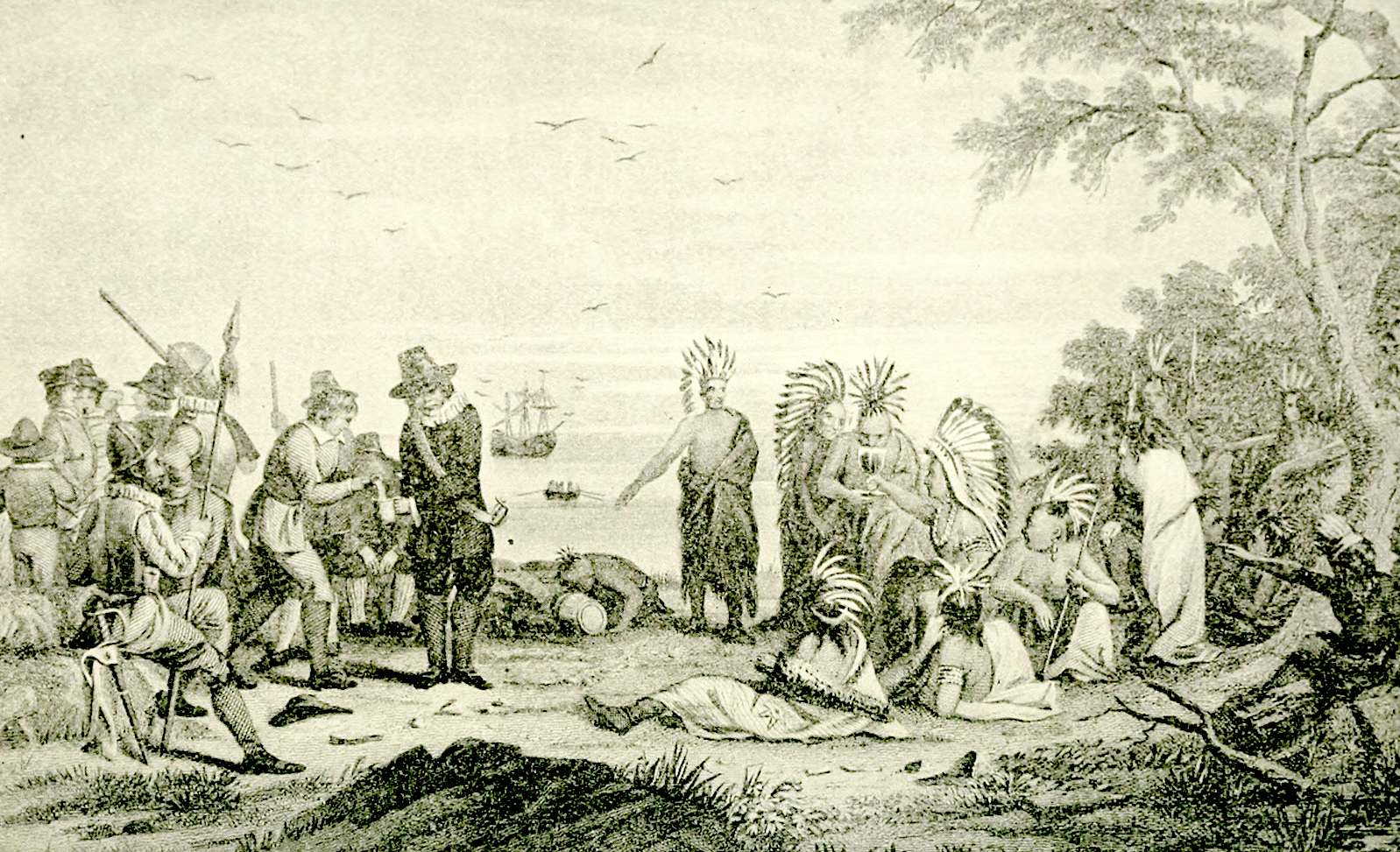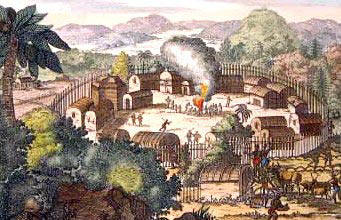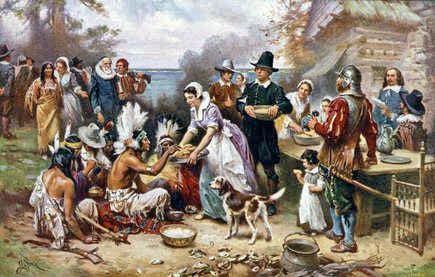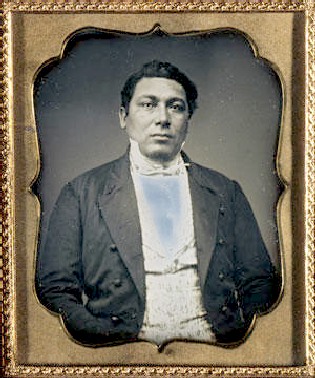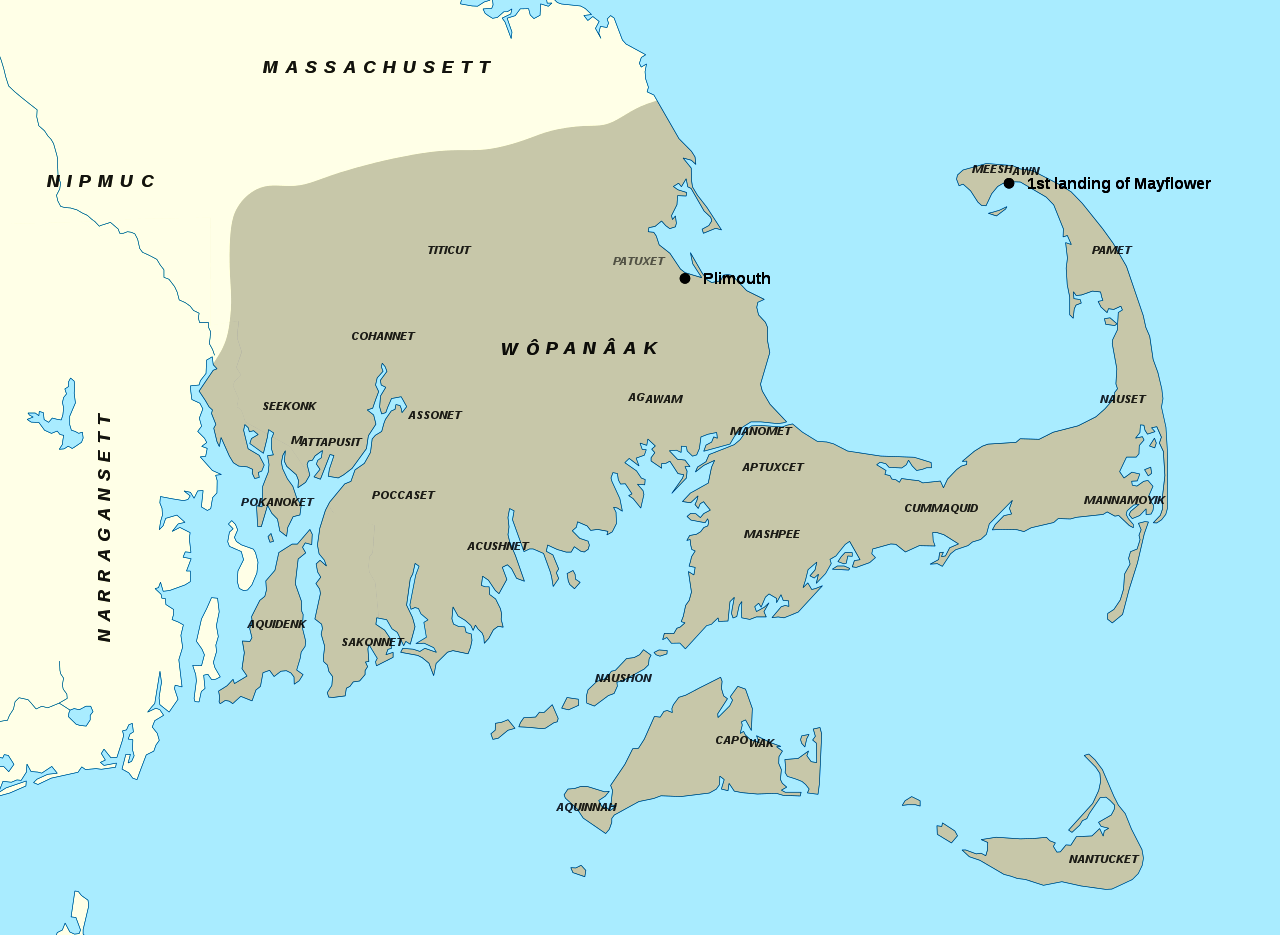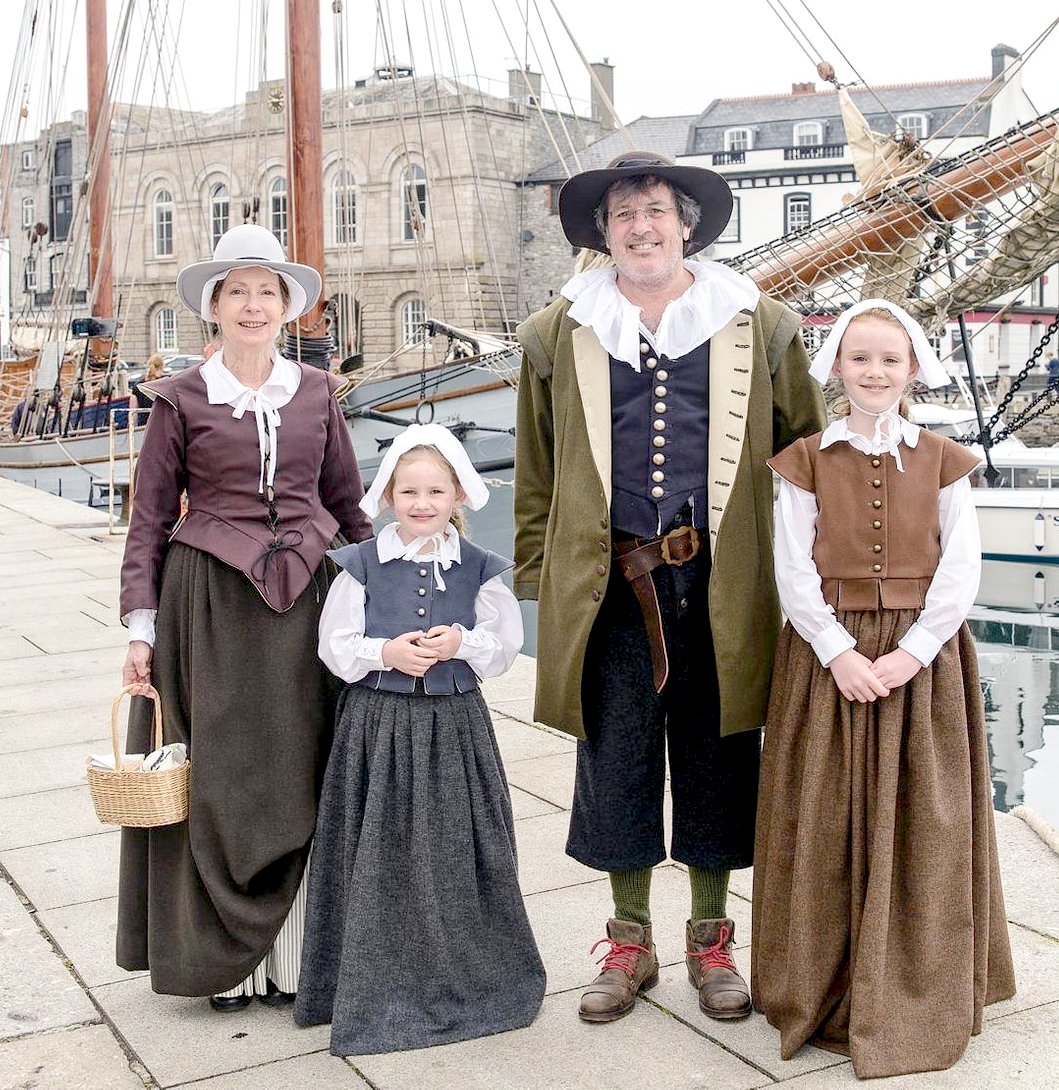|
THE WAMPANOAG
Please use our A-Z INDEX to navigate this site or return HOME
|
|
SUSTAINABLE TRADITION - The majority of clothes worn by the Wampanoag were made from animal skins or birchbark before Europeans came. These included long breechclouts, leggings, long cloaks and shoulder to waist length mantles. These were made from the skins and fur of deer (buckskin) raccoon, beaver, otter and moose. Wampanoag Women wore wraparound skirts, tunics and cloaks. Moccasins were made of one piece of moose skin with a long tongue and a high collar that could be left up or folded down. The moccasins were greased on the outside for additional waterproofing. Belts were woven from dogbane and other plant fibers that were colored with vegetable dyes.
Fortunately for the Pilgrim settlers, the Wampanoag inhabited the area where the Pilgrims landed. Each tribe had its own territory where they would fish, hunt and harvest. Their hunting grounds had strict boundaries, as certain areas were very densely populated. The Wampanoag were skilled at cultivating the land, and moved from one area to another in order to maximise their harvest (crop rotation). During the summer, they would stay near the coast, and during wintertime they would move further inland, into the forests.
SLAVE TRADING & THE PILGRIMS
PEOPLE
OF FIRST LIGHT - The Wampanoag are native Americans and have lived in Rhode Island and Massachusetts for more than 12,000 years - long before the pilgrims arrived.
Their name means People of the First Light.
HUMANS ARE HUMAN
One of the reasons why humans are so successful as a species is our ability to reason and compromise. Travelers on ships frequently carried beer instead of water, where water soon becomes undrinkable in casks, whereas beer tends to remain uncontaminated. But beer makes one drowsy and if taken in place of water, makes you groggy, Hence the naval term at that time for weak beer was: "Grog." The imbibing of alcohol on ships is still a naval tradition, leading to lifelong addiction to alcohol: alcoholism. The same applies to merchant and cruise ships.
According
to reports, sometime in March 1621, an English-speaking Native American called Samoset entered the Plymouth colony and introduced himself.
Samoset asked the Pilgrims if they had any beer, and was invited in,
when he spent the night talking to the settlers. He returned some time later to introduce Squanto to the Pilgrims. Squanto spoke better English than Samoset. They arranged a meeting with Massasoit, the leader of the Wampanoag tribe.
ACCOMMODATION - Many Wampanoag lived in oval-shaped longhouses during the winter. The main difference between the wetu and the longhouse was that the longhouse was a permanent structure, much larger elongated shape. Mats for these winter homes were woven from bulrushes. A longer process than using cattails, but with a hardy result. The mats were used for both the outside and interior of the Wampanoag longhouse and frequently painted black and red. The longhouse villages were surrounded by fencing (palisades) and reinforced with mud. Longhouses were built up to 200 feet long, 20 feet wide and 20 feet high. The longhouses had smoke holes in the roof to allow air and light in and smoke to escape. The smoke hole had a birchbark cover to keep out the rain. The position of the cover could be moved as the direction of the wind changed.
The Narragansett, another Native American tribe, had not been affected by the epidemic and were a powerful tribe. The Narragansett forced the Wampanoag to pay tribute to them by submitting valuable goods. Massasoit of the Wampanoag formed an alliance with the English of the Plymouth colony to help the Wampanoag repel the attacks of the Narragansett.
WHALING - A famous Wampanoag whaler, Captain Amos Hoskins
After 1650, John Eliot and other Puritan missionaries sought to convert Indians to
Christianity. The converted Indians settled in 14 "Praying towns." Eliot and his colleagues hoped that the Indians would adopt practices such as monogamous marriage, agriculture, and jurisprudence. The high levels of epidemics among the Indians may have motivated some conversions. Salisbury suggests that the survivors suffered a type of spiritual crisis because their medical and religious leaders had been unable to prevent the epidemic losses. By the latter half of the seventeenth century, alcoholism had become rampant among Indian men. Many turned for help to Christianity and Christian discipline systems. Christianity also became a refuge for women from drunkenness, with its insistence upon temperance and systems of retribution for drunkenness
Women had control of property, and inheritance and descent passed through their line, including hereditary leadership for men. Wampanoag women on Martha's Vineyard were the spiritual leaders of their households. In general, English ministers agreed that it was preferable for women to subvert the patriarchal model and assume a dominant spiritual role than it was for their husbands to remain unconverted. Experience Mayhew asked, "How can those Wives answer it unto God who do not Use their utmost Endeavors to Perswade and oblige their husbands to maintain Prayer in their families?" In some cases, Wampanoag women converts accepted changed gender roles under colonial custom, while others practiced their traditional roles of shared power as Christians.
The Wampanoag tribe survive today. About 4000 to 5000 Wampanoag Indians dwell in New England.
MARTHA'S VINEYARD - RESERVATION: MASHPEE WAMPANOAG OF GAY HEAD
In 1972, both the Wampanoag Tribal Council of Gay Head and the Mashpee Wampanoag Tribal Council were set up. After receiving the designation of a federally recognized tribe, the Mashpee Wampanoag raised its flag for the very first time on January 11, 2016. At present, the Mashpee consists of more than 1400 enrolled members and the Tribe of Gay Head consists of 1121 members.
MAYFLOWER PILGRIMS VOYAGE - Pilgrimages take place all over the world, many times each years, with migrants seeking to escape tyranny or persecution in one form or another. The Founding Fathers were no different, but set off at a time where opportunities abounded in relatively under-populated countries, such as America and Australia, where the inhabitants did not have strict border and immigration controls. It was a time of opportunity for those with pioneering spirit, that even today, officials try to kick out of you with financially enslaving taxing and laws, to help them sustain their empires. At least we've stopped burning people at the stake in town centres. Today, colonization is the dream of would be interplanetary travelers. But they are going to need more than a Space Shuttle version of the Mayflower.
THE
BOAT THAT STARTED IT ALL
The right to receive and impart ideas is enshrined in the Universal Declaration of Human Rights, as is the right to be treated fairly and humanely. In the age of the internet, information is freely available to help people decide for themselves what is right and wrong, what is factual and what is fiction.
On 16 September 1620, the Mayflower set sail with approximately 30 crew and 102 passengers on board, leaving the unsafe Speedwell behind. Almost half of them were Separatists, or “Saints”. They had chosen this name to emphasize the fact that they were part of a specific group with particular views. All others were referred to as “Strangers”, as this is how the Saints regarded anyone who was not part of their group, and did not understand their faith. The 'Strangers' were a group of skilled workers who were sent along by the investors to help build the colony.
The original wooden 30-meter Mayflower took 66 days to carry the Pilgrims, Founding Fathers from the U.K. to what is now the U.S. The voyage would have involved a lot of tacking, because sailing ships cannot sail directly into the wind, hence cargo ships use the trade wind routes, something we should (perhaps) go back to in the quest for sustainable navigation.
LINKS, CONTACTS & REFERENCE
https://
|
|
|
Please use our A-Z INDEX to navigate this site
This website is Copyright © 2021 Jameson Hunter Ltd
|
